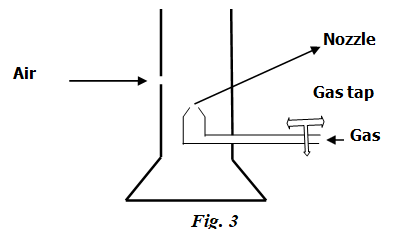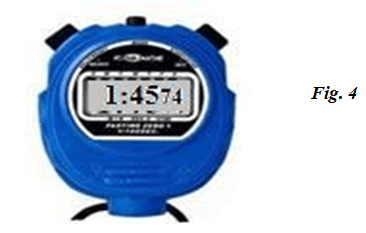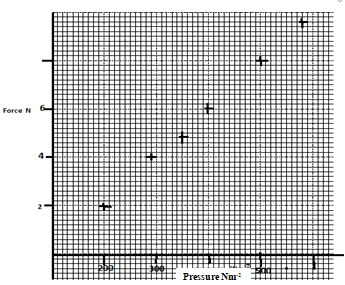Published on November 25th 2023 | 4 mins , 738 words
1. A burette has an initial reading of 40.0 cm3. Some 24 drops of water each of volume 0.5cm3 are added into the instrument. What is the final volume of water in it? (2 marks)
2. (a) Name two forces that determine the shape of liquid drop on a solid surface. (2 marks)
(b) If an umbrella is touched with finger on inner surface when it is raining, it allows the rain water to leak through. Give a reason. (1 mark)
3. The barometric height in a town is 55cmHg. Given that the standard atmospheric pressure is 76cmHg and the density of mercury is 13.6g/cm3, determine the altitude of the town. (Density of air is 1.25kg/m3) (2marks)
4(i) what is Brownian motion? (1mk)
ii. A measuring cylinder contains 20cm3 of water. 10cm3 of salt is added and stirred. Explain why the new volume is not \(30cm^{3}\). (1 mark)
5. Figure 1 shows samples of same liquid in beakers B and C being heated through a well-lagged copper rod of non-uniform thickness. A thermometer is placed on each sample for some time.
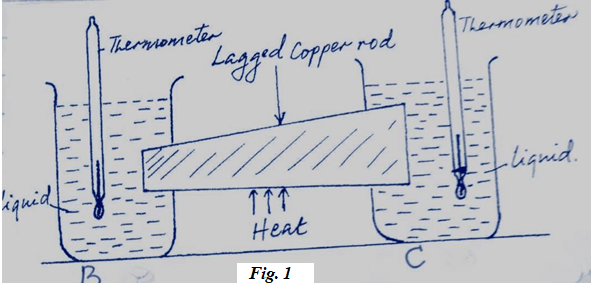
5. Figure 2 shows a uniform meter rule balancing when a mass of 200g is hung at one end.
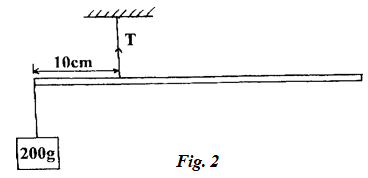
7. State the Hooke’s Law.(1 mark)
8. Figure 3 shows a Bunsen burner.
Explain how air is drawn into the burner when the gas tap is open. (2 mks)
9. A can containing only air is tightly screwed and left in strong sunlight. Using kinetic theory of gases explain how the pressure inside the can will be affected. (3 marks)
10. A form four girl did an experiment using a simple pendulum of length 120 cm to determine the acceleration due to gravity. She timed for 50 oscillations (using a stop watch) and got the result indicated in figure 4 below.
(a) Record the indicated time in SI units. (1 mark)
(b) From the information above, determine the value of acceleration due to gravity, g, from the formula \(T^{2} =\frac{4\pi^{2}𝒍}{g} \) where T is periodic time. (Take 𝜋 = 3.142) (3 mks)
11. A machine consists of a wheel of radius 40cm and axle of radius 10cm. Determine the efficiency of the machine when used to lift a load of 300N using an effort of 100N. (2 mks)
12(a) State the Archimedes’ principle. (1 mark)
(b) A cork of volume 100cm3 is floating on water. If the density of the cork is 0.25 gcm-3;
(i) Calculate the mass of the cork. (2 marks)
(ii) Find the upthrust force on the cork. (2 marks)
(iii) What minimum force is required to immerse the cork completely? (2 marks)
(c) The graph below shows the variation of pressure produced at the end of piston as the force is applied on it.
i. Draw the line of the best fit. (1 mk)
ii.From the graph determine the area of the piston. (3 marks)
iii. On the same graph draw a line showing the pressure produced when the same force was applied on a wider piston. (1 mark)
(d) In construction of a mercury barometer care is taken to make sure it has no gas in the space above mercury.
i) How would you test whether there is a gas above mercury? (1 mark)
ii)State the problem caused by the presence of gas in the barometer. (1 mark)
(e) Find the total pressure experienced by a diver 8 meters below the sea surface. (Take Atmospheric pressure = 103 360N, Density of sea water = 1030 kg/m3) (2 marks)
5. (a) What is meant by acceleration? (1 mark)
(b) Figure 5 shows a displacement-time graph for a rally vehicle.
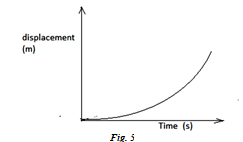
(ii) Sketch a velocity-time graph for this vehicle. (1 mark)
